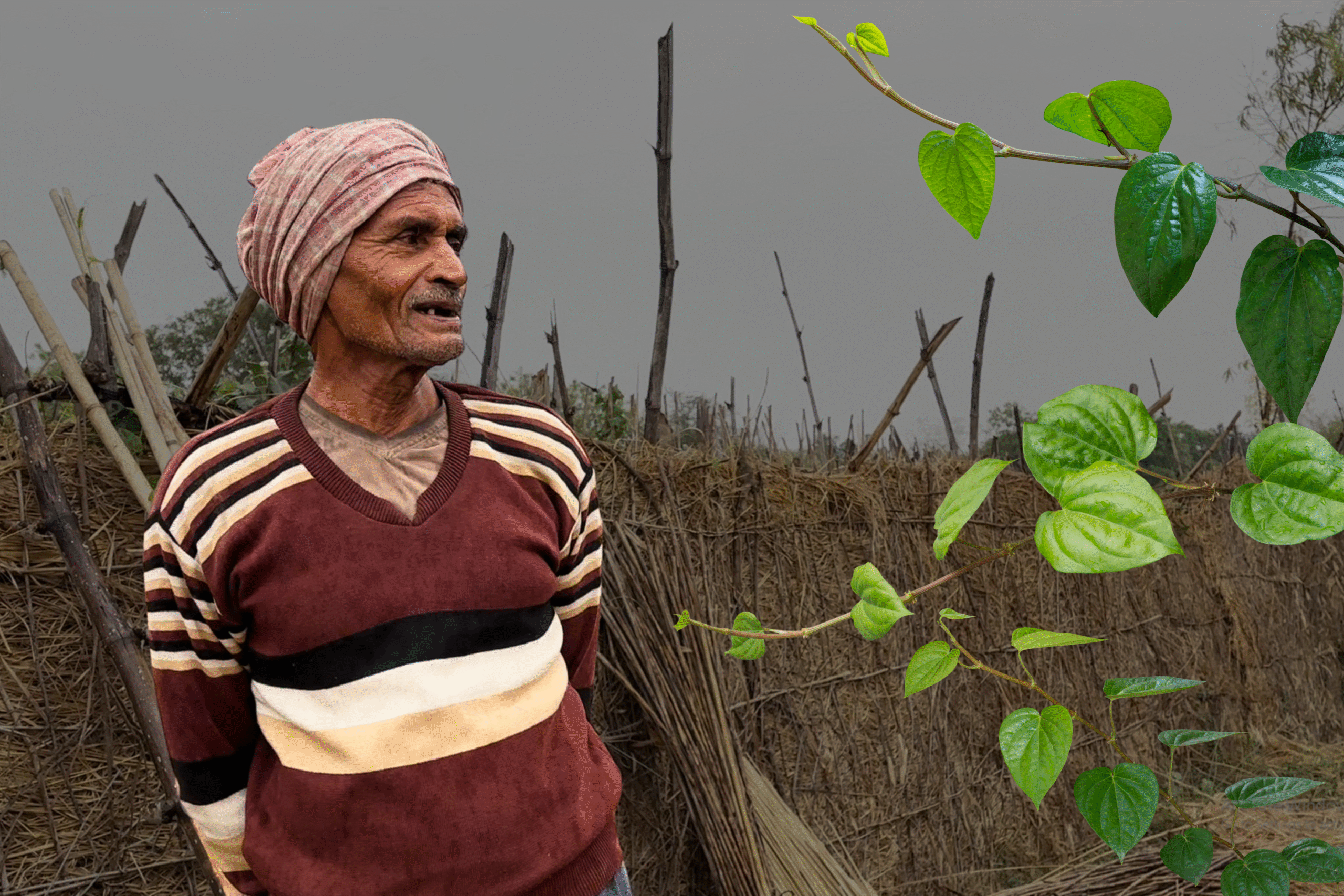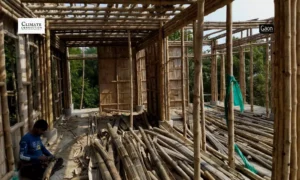Sehore (Madhya Pradesh)
In March this year, Mahendra Verma decided it was the right thing to do to invest in cultivating garlic as its price was soaring in the market. Six months on, Verma is regretting his decision as all the garlic he grew and stocked at home in the hope of making profits is lying unsold at his home in Rafiqueganj village in Sehore district, Madhya Pradesh.
“The garlic was selling at eighty rupees per kilogramme [Kg] in March. That was when farmers like me decided to sow it. The harvest was good, and I have 80 gunny bags [4,000 Kgs] of produce to sell,” the 45-year-old farmer told Gaon Connection. “But today, I would do better to just throw the garlic away as the price is way too low,” he rued. The garlic farmer is living in hope that the prices will rise again and the stock of garlic he has at home will find a good price.
“If only had I know that the production would be so much more than demand, I would have done thins differently,” he added.
The garlic is going at a rate of Rs 8 – Rs 10 a Kg in the wholesale market in the district. This is a ten fold decrease in the prices when compared to March.
Also Read: ‘Everything washed away in floods; the clothes on our bodies are all that’s left
Verma is not alone. Millions of farmers in the state are staring at the glut of garlic in the market, and facing huge losses.
In Sehore district, along the highway, heaps of garlic are rotting where the farmers have thrown them away. The district is part of the ‘garlic belt of India’ which also includes districts in Madhya Pradesh such as Ratlam, Mandsaur, Neemuch and Ujjain, and in Rajasthan in the districts of Jhalawar, Baran, and Kota.
According to data provided by the National Horticulture Board, Madhya Pradesh produced 20,16,130 tonnes [1 tonne= 1,000 Kgs] of garlic in 2021-22 which accounted for 62.85 per cent of the total garlic production in India. Rajasthan produced 5,39,180 tonnes of garlic in the same period (16.81 per cent of the country’s production). These two states account for more than 78 per cent of the total production of garlic in India.
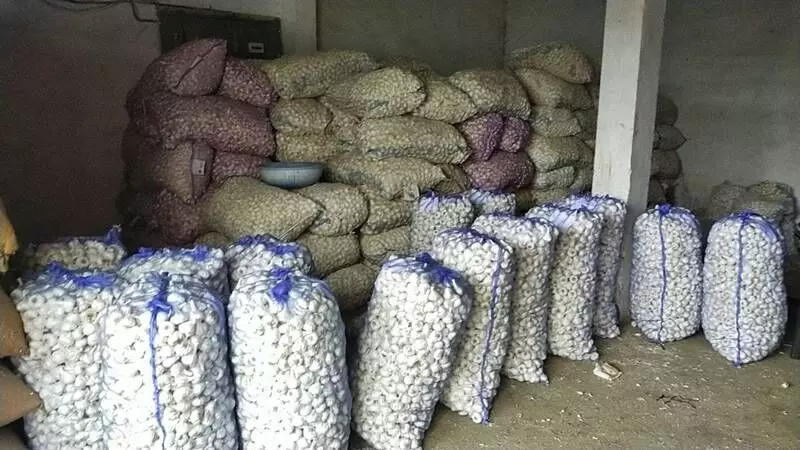
For Verma, the garlic glut has spelt unmitigated disaster as he had spent more than Rs 200,000 to grow garlic in his five acres of land.
“I have two kids who are studying in a private school. I have taken a loan of more than Rs 200,000 from the Kisan Credit Card and some moneylenders in order to sow garlic and onions this year,” he said.
The farmer said that it was better to do nothing as farming was bringing nothing but distress to his kind. “”Many farmers resort to killing themselves in order to escape this impossible situation,” he said.
सरकार की गलत नीतियों के कारण किसान के ये हालात हुऐ हैं मध्यप्रदेश में किसानों को लहसुन का भाव एक रुपए किलो भी नहीं मिल रहा है फसल का भाव किसान को मिलता नहीं और कर्ज किसान को बैंक से बहुत जल्दी मिलता है। @CMMadhyaPradesh @nstomar
आंदोलन अभी जारी हैं अब एमएसपी की बारी है@ANI pic.twitter.com/kzGO0ehdw6— Rakesh Tikait (@RakeshTikaitBKU) August 24, 2022
Babli Bai, a 35-year-old farmer, also from Rafiqueganj village, has 100 gunny bags of garlic occupying space in her home.
“The price that I am getting for garlic in the mandi is not enough to cover even the labour cost. I have spent more on employing labour to harvest the garlic. That’s why farmers are throwing away their produce,” she told Gaon Connection.
Also Read: ‘The government should declare a drought’ – Gaon Connection’s ground report from rain-starved Bihar
“I want the government to ensure that we get a respectable price for our hard work. Farmers should be made to suffer like this. My kids go to school, I am finding it difficult to afford their education and other household expenses,” she said.
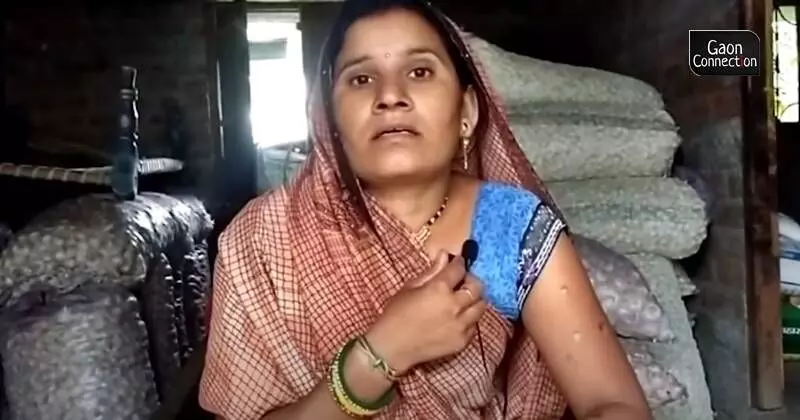
Babli Bai, a 35-year-old farmer, also from Rafiqueganj village, has 100 gunny bags of garlic occupying space in her home.
‘MSP is a must’
The demand for a minimum support price for garlic was raised by farmers in Sehore. “I am overwhelmed by the loans. I borrow from one lender to pay back the other but how long will it go on? This leads to despairing farmers giving up their lives,” Aijaz Miyan from Sehore told Gaon Connection. “The government must include lehsun in nyoontam samarthan moolya [MSP],” Aijaz Miyan, emphasised.
“Let me assure you that nobody here is a farmer because it pays to be one or that we like doing what we are doing. We are farmers because we have nothing else to do,” Ram Shankar Jaat from Sehore told Gaon Connection. Jaat pointed out that there should at least be some system that the government should bring in that would ensure the farmers at least recovered their input costs.
“Almost every farmer I know has a case registered against him for having defaulted on loans. That leaves us with two options. We either go to jail for not repaying debts or we borrow some more money and sink further into debt,” Jaat told Gaon Connection.
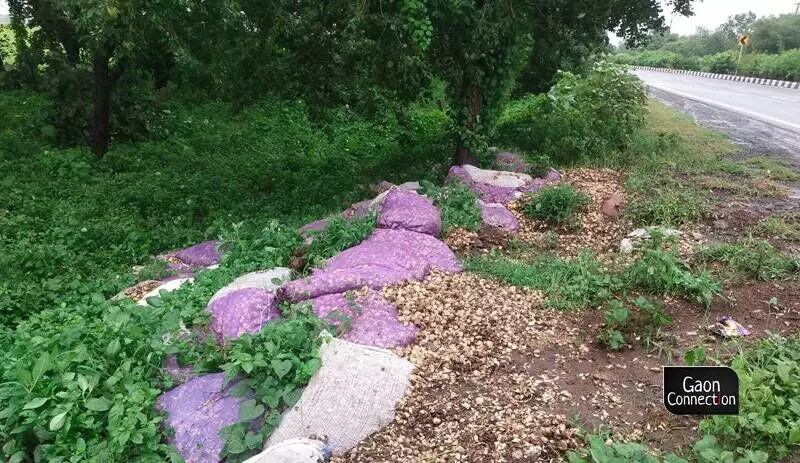
At present, garlic does not come under the ambit of the MSP. According to Commission of Agricultural Costs and Prices (CACP) that comes under the Union Agriculture Ministry, 23 commodities are listed which have an MSP. These include seven cereals (paddy, wheat, maize, sorghum, pearl millet, barley and ragi), five pulses (gram, tur, moong, urad, lentil), seven oilseeds (groundnut, rapeseed-mustard, soyabean, sesamum, sunflower, safflower, niger seed), and four commercial crops (copra, sugarcane, cotton and raw jute). But there is no garlic in the list.
Increased mandi tax, quality issues bothering trader
Wholesale traders in the garlic market at Sehore are also complaining of increased tax on garlic.
“Earlier the mandi tax was 0.5 per cent on the sales but now it is increased to 1.5 per cent. That is also a reason as to why we are struggling to buy huge quantities of garlic especially at a time when the production is so much. The overproduction is distressing for farmers too. The farmers were getting good prices for three consecutive years but this year there’s overproduction,” Pradip Rathod, a Sehore-based garlic trader, told Gaon Connection.
Though there has been a glut, in many cases there is a problem with the quality of the garlic, Rathod pointed out. “The heavy rains have damaged garlic. In some crops, more than 60 per cent of the produce is sub-standard. The big factories who buy garlic to process and add to products such as ginger-garlic paste are not interested in bad quality garlic,” he added.
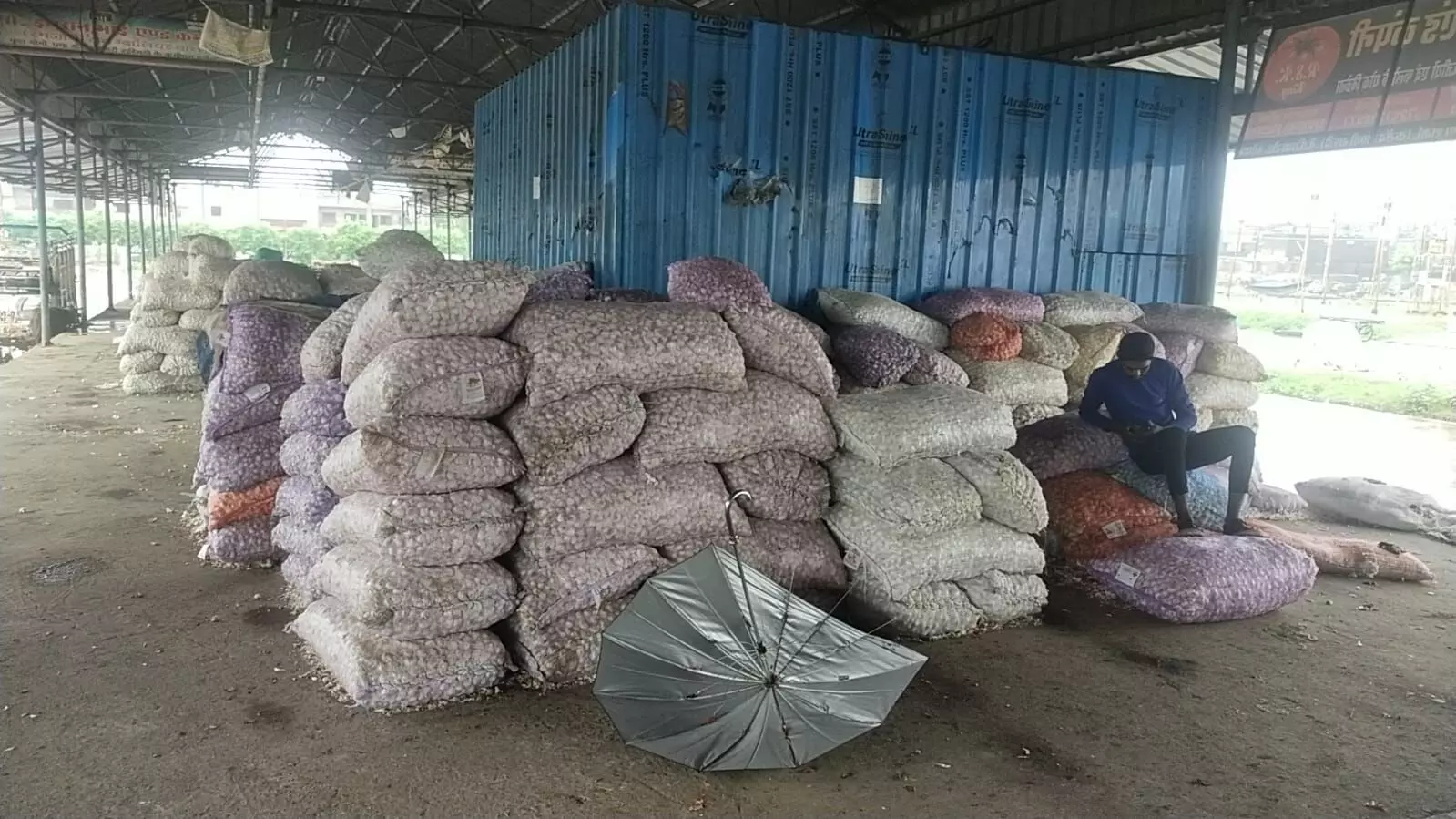
Wholesale traders in the garlic market at Sehore are also complaining of increased tax on garlic.
There is nothing the government can really do to stop farmers from over-producing a crop, Rajkumar Sagar, a Sehore-based assistant management officer in the Farmers’ Welfare and Agriculture Development Department, told Gaon Connection.
“Overproduction is bad for farmers. We have not even provided them with the garlic seeds but they have bought them from Maharashtra and sown them in the hope of profits,” Sagar said.
“The farmers themselves increase and decrease acreage on the basis of the market sentiment which is sometimes injurious to them,” he added.
In 2021, garlic was cultivated on 4,860 hectares of land and 48,563.86 metric tonnes of the produce was harvested. In 2022, the acreage under garlic cultivation was 4,900 hectares and 48,962 metric tonnes of the produce was harvested.







